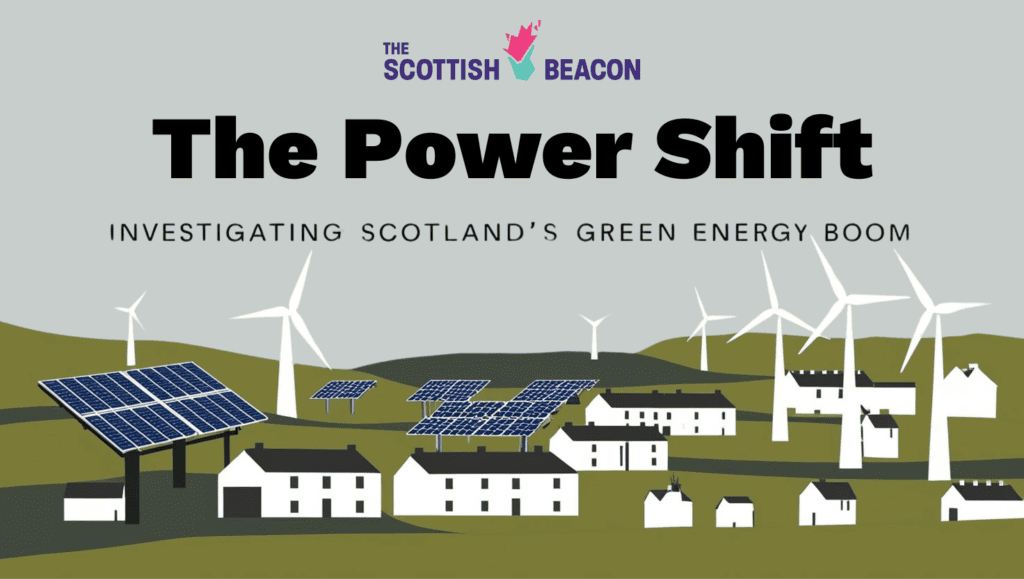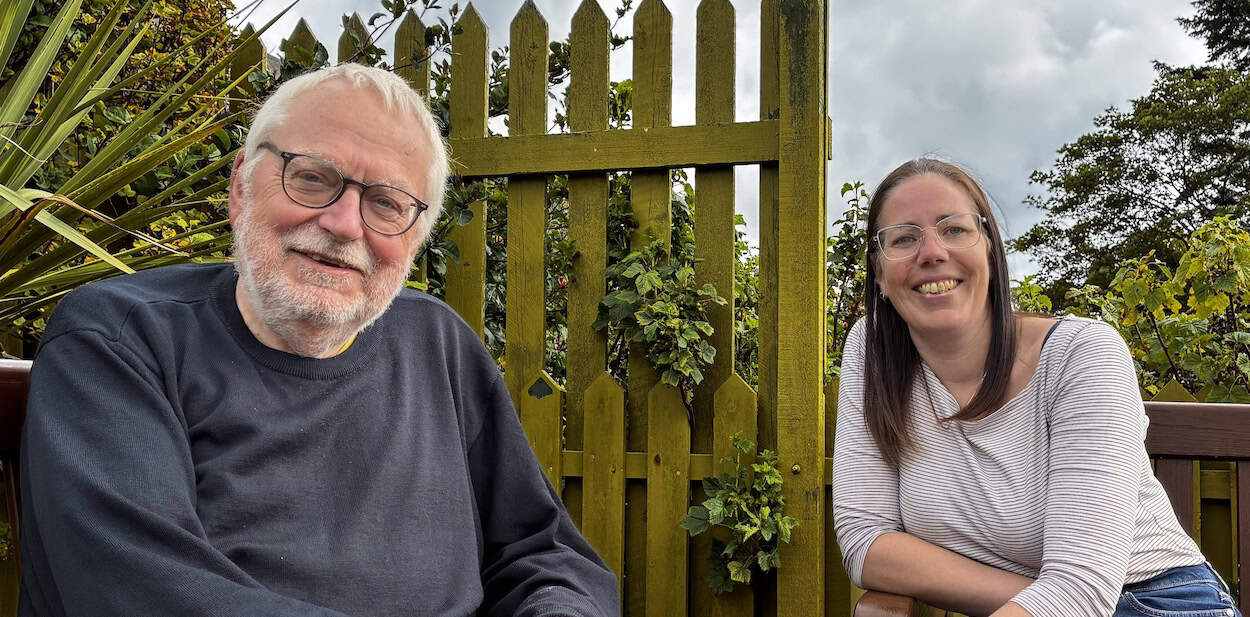Published in partnership with The Herald
THE KEY to a successful community benefit fund from renewable energy projects lies in the word ‘community’.
That is according to those behind the fund that administers more than two million pounds annually from the Viking Energy wind farm in Shetland.
Bringing communities together to think and work pragmatically, while often divisive debates over the pros and cons of any large project proposal rages on, is an impressive feat in itself.
Chris Bunyan, one of the driving forces behind the Shetland Community Benefit Fund (SCBF), freely admits that it has not been an easy ride.
And it wasn’t made any easier by the bitter dispute over one of the largest onshore wind farms in the UK that left the 23,000-strong island community battered and bruised, and with a lot of healing still to be done.
Yet somehow pragmatism succeeded, and community councils from across the isles – even those vehemently opposed to the development – came together to negotiate a deal with SSE Renewables, should the wind farm ever happen.
This was based on a voluntary £5,000 per installed megawatt, as is still recommended by the government, a figure that is now widely regarded as too low.
Calls are being made for much higher payments and for community benefit to be linked to production – and those Shetland turbines are very productive when turning – but Bunyan points out that none of that was a consideration at the time.
The 78-year old former journalist and community activist, who has been chairing the fund ever since it was incorporated as an independent co-operative regulated by the Financial Conduct Authority in 2011, insists that from a community benefit point of view Shetland has done well.
“It was a good deal at the time, but times have changed. If we were starting again today, we would be doing things differently, and I can’t imagine that we would be asking for £5,000 per megawatt,” he says.
“But hindsight is a wonderful thing. We did well at the time, and it is no secret that £5,000 was not the first figure that was put to us [by the developer]. It was considerably lower.”
Due to prolonged legal action against the 2012 planning approval, followed by uncertainty over funding, the Viking project was delayed by many years, and construction only started in summer 2020.
He recalls how the fund has had AGMs for consecutive years with nothing to discuss and the only item on the agenda was the question whether it was worth continuing for another year in the hope that a decision on the project would be made some time.
Regardless of whether it is £5,000, £7,500 or £12,000 per megawatt per year, all this would not have happened without co-operation at a grassroots level.
Fund manager Eleanor Gear says the key challenge in achieving community benefit is first to define community and then get them to work collectively towards a target. And that is easier said than done.
With Shetland being an island, it was relatively straightforward for the 18 community councils to come together to form an acceptable negotiating partner for the developer. That, however, might not be the case in other parts of Scotland.

Local decision making
But Gear is adamant that to keep the process local, communities need to act.
“The clue to community benefit is that it stays with and in the community – however one defines and however one organises that – and to ensure that it doesn’t go nationally,” she says.
That is the message Gear and Bunyan regularly convey when asked to share their experiences with people from across Scotland and beyond, faced with the prospect of large renewable energy projects on their doorsteps.
But the demand on volunteers to drive this forward is considerable, and seeing this process through in often difficult circumstances requires a lot of staying power from those involved.
“Never underestimate the workload on volunteers”, Bunyan warns.
They also advise to get in touch with Local Energy Scotland at the earliest opportunity to benefit from the government agency’s expertise and knowledge.
In the end SCBF succeeded, and the £2.2 million (443MW x £5,000) paid into the fund annually is locally managed and administered without any input from local or national government.
SSE Renewables also agreed to pay around £1,000 per installed megawatt during the four-year construction period of the 103 turbine wind farm.
The company said it had a long-standing commitment to community benefit, having provided funding to communities across the UK and Ireland for more than 20 years.
“The Viking Community Benefit Fund is the largest of its kind in the UK, supporting communities right across Shetland,” a SSE spokesperson said.
“It is expected to distribute around £72 million, with payments linked to inflation, based on an anticipated wind farm life of 25 years. More than £1 million has already been awarded.
“Overall, the fund offers reliable, risk-free support for community-led projects that might not otherwise get off the ground – helping to create a lasting legacy for the islands.”
SCPF has set an exemplary standard in the management and delivery of community benefit funding, they added.
Following an islands-wide consultation, disbursement priorities and policies have been agreed, and decisions on payouts are being made on community council level.
Each of the 18 community councils have one representative as a director on the SCBF board.
This approach, Bunyan notes, has not just helped to empower community councils, but has also provided them with resources they have never had before.
“I anticipated they [SSE Renewables] wanted oversight of what we were doing. I hesitate not to use ‘control’ but oversight,” he says, “but in fact it has been the opposite.
“They have been very helpful with a minimum of bureaucracy; very much hands off. We only need to go to them if we have an application of more than £50,000.”
Priorities and strategic targets
The fund is split in two parts with £400,000 annually being made available through the community grant scheme. These grants are distributed across the community council areas with those hosting the wind farm – Delting, Tingwall, Whiteness and Weisdale, Nesting and Lunnasting and Sandsting and Aithsting – receiving the lion’s share.
The remaining £1.6 million annually will go towards strategic projects that have the potential to make a lasting difference, such as encouraging young people to stay or return to the islands, helping reduce the cost of living and provide more affordable housing.
As such the fund, which only received its first full payment in September last year, has developed an already over-subscribed scheme that offers employers up to £15,000 over three years to take on an apprentice.
SCBF has also committed £200,000 to “top up” energy efficiency work funded by the Scottish Government and administered by Shetland Islands Council to help those living in fuel poverty.
And a new rural energy hub in the village of Brae has received £127,000 in funding.
Scalloway Community Development Company has also received £60,000 for a district heating feasibility study, while the Royal Voluntary Service was awarded £32,770 towards staffing costs of a driver for an accessible vehicle across three years.
Other recipients under the strategic fund so far include Fair Isle Research Marine Organisation and Hjaltland Housing Association.
Funding has also been put towards procuring consultancy support and advice for Shetland community groups who may wish to explore housing projects.
The community grant scheme has so far dished out more than £300,000 since last year, with recipients ranging from Dogs Against Drugs and the Shetland Netball Association to the ALICE Theatre Project.
Gear said more £1.1 million in total has been spent since the Viking wind farm went live last year, which also includes an earlier drawdown of £200,000 for a local fundraising initiative to get a MRI scanner for the Gilbert Bain Hospital in Lerwick.
Bunyan, however, chips in that £2 million annually is not that much when you want to make a difference for the whole of the islands.
“Divide it by 23,000 and it’s just £100 per person on the island. If you knock that off someone’s electricity bill it will not make much of a difference,” he says.
But it is early days yet, and the large “strategic’ projects asking for large six figure sums have not come through yet. There are some in the pipeline, Bunyan and Gear are aware of, but since these have not been signed off yet, their lips are sealed.

This article is part of The Power Shift – a collaborative investigation by 10 independent, community-based publishers across Scotland, exploring the impact of the green energy transition on communities. Co-ordinated by the Scottish Beacon and supported by the Tenacious Journalism Awards, the project aims to amplify local voices, facilitate cross-community learning and push for fair, transparent energy development.
Sign up to the Scottish Beacon newsletter for all the latest from this project.

